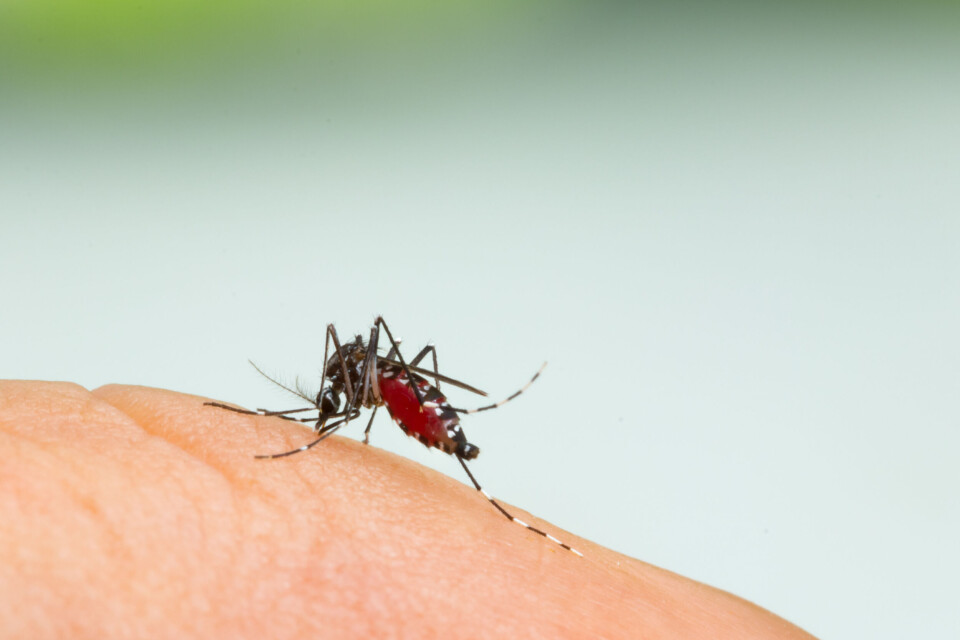-
French nature festival is a paradise for bird watchers
The spring event runs from April 12-20, showcasing the rich flora and fauna of the Baie de Somme
-
D-Day silhouettes overlooking the British Normandy Memorial return for a second year
‘I don’t think anyone could walk through without getting a real sense of respect for the soldiers who died here’
-
Local election rule changes in France and why you may have a new mayor in 2026
Communes with fewer than 1,000 residents are particularly set to see changes from next year
France warns of increased risk of dengue fever from tiger mosquitoes
An increased number of ‘native’ cases has led health authorities to remind health professionals and the public to be aware of the risks and symptoms

Health authorities are warning people in France to be alert to the risk of dengue fever – as well as chikungunya and zika – spread by tiger mosquitoes as increased numbers of native cases are reported.
In July 2022, five native cases of dengue were detected in the Provence-Alpes-Côte d'Azur (PACA) and Occitanie regions. A ‘native’ or ‘indigenous’ case means that it was detected in people who had not previously travelled to an international at-risk area, and the infection came from a tiger mosquito already within France.
These cases spread after an infected person returns to France from an at-risk country, and is then bitten by a tiger mosquito. The mosquito then acts as a carrier and spreads it to other people who have not themselves travelled abroad.
This has led to the health authority la Direction générale de la santé (DGS) warning health professionals and the public to be alert to the increased risk.
In a statement, it said: “The occurrence of episodes in previously unaffected departments, such as Pyrénées-Orientales, Haute-Garonne and Hautes-Pyrénées, testify to an increase in the risk of dengue in metropolitan France, but also of chikungunya and zika, also transmitted by the tiger mosquito.”
Other areas of the country are likely to see cases and outbreaks in the coming weeks, the DGS has warned. Any cases must be reported to the relevant regional health authority, the ARS (Agences régionales de santé), so that the necessary preventative measures can be implemented.
These will likely include mosquito control measures.
From May 1 to September 2, Santé publique France found 139 cases of imported dengue in the country. However, as the disease is often asymptomatic, that number is thought to be at least double in reality.
In addition, 26 native cases have been reported, including three major outbreaks in PACA and Occitanie. This is in contrast to an average of around 12 native cases in normal years, since 2010.
Read more: Tiger mosquitoes: new case of native dengue fever confirmed in France
Read more: New dengue fever case in France, victim had not travelled to risk area
The most common symptoms of dengue fever are:
-
Fever
-
Headache
-
Joint pain
-
Digestive problems
A red rash or ‘patches’ can also sometimes appear.
The DGS warns that symptoms can become more severe, and require immediate care. Severe ‘warning signs’ include:
-
A fever of over 39°C after the fifth day of symptoms
-
Significant abdominal pain with or without diarrhoea
-
Frequent vomiting
-
Agitation or drowsiness
-
Oedema and heavy bleeding or signs of haemorrhage
Dengue is not contagious among humans on its own, but is spread by mosquito bites from an infected mosquito.
Tiger mosquitoes are currently in 67 departments in France, and counting.
The health ministry said: “Prevention of bites and fighting the spread of mosquitoes is essential to limit epidemics.”
Related articles
Mosquitoes make their return in France: Tips on keeping them away
64 French departments on red alert for tiger mosquitoes
Rare case of ‘indigenous’ dengue confirmed in south of France
























